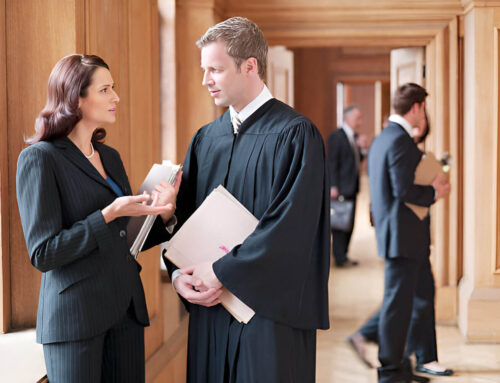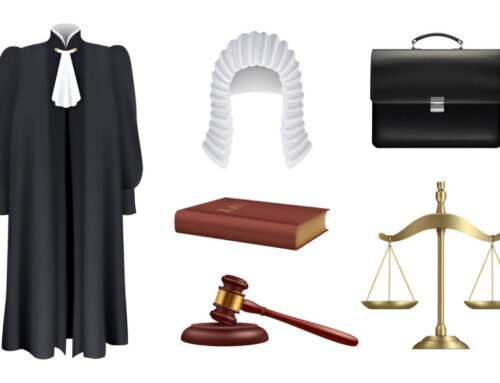Introduction: What Do Barrister Robes Symbolize?
Barrister robes symbolize many things.
First and foremost, they symbolize respect for the authority of law.
Wearing robes equalizes everyone. It brings all of us together under the authority of the legal system. It’s not about being flashy, distinct, or putting your personal ego on display. It’s about submitting ourselves — equally — to the law.
Robes also symbolize egalitarianism. They mask wealth, status, prestige, honor, individuality, age, and differences.
They remind us that justice is blind — that it treats us all the same.
Connection to History
Behind every barrister robe is a rich history tied to the evolution of the legal system.
Some say robes originate from mourning attire worn after the death of the Queen.
Others trace robes back even further — to the liripipe (the flap over the shoulder), a medieval feature once used for clients to place payment into the barrister’s robes without openly exchanging money.
Either way, robes connect barristers to centuries of legal tradition.
Humility
Robes also symbolize humility.
They require people who might otherwise be flamboyant or ostentatious to suppress their self-expression and focus on what really matters: their arguments and their rhetoric before the court — not how they look.
Professionalism and Discipline
Barrister robes are a constant reminder that lawyering is serious business.
They reinforce the dignity and decorum expected inside the courtroom. When you put them on, you’re stepping into a tradition that demands discipline.
Public Trust
Finally, robes are a symbol of public trust.
When you see someone in a robe, you immediately know they’re a lawyer — a member of the bar who has studied hard, passed rigorous tests, and is bound by high ethical standards.
Wearing robes signals that you serve the public good, not just yourself.
Why Do We Still Wear Robes Today?
Part of it is tradition. The legal system is notoriously conservative. It values continuity, and robes serve as a bridge between the past and the future.
Robes promote impartiality too.
Imagine a lawyer walking into court looking flashy, successful, and wealthy. A jury might unconsciously think better of them compared to a lawyer who looks less polished. Robes level the playing field.
They set the tone. They establish a formal, serious environment, reminding everyone of the importance of what happens inside the courtroom.
Robes also enhance credibility. When we robe, we mean business.
And finally, robes create unity among the bar. Walk into any courtroom, and every lawyer looks the same — part of a distinguished and honorable profession.
History and Meaning of Robes
Where Did the Tradition of Barrister Robes Come From?
Early English barristers dressed similarly to clergy and scholars to signal that they were learned men.
At the time, law and theology were closely tied, and legal attire mirrored religious clothing to emphasize righteousness.
By the 14th and 15th centuries, judges and barristers began formalizing their attire into specific colors and styles.
In the 17th century, following the death of King Charles II, barristers adopted black robes as a symbol of mourning — a tradition that never reversed.
Over time, court dress became standardized across England and spread to Commonwealth countries like Hong Kong, Nigeria, Australia, and Canada.
Even though fabrics and cuts have modernized slightly for comfort, the core symbolism remains unchanged.
Why Are Robes Black?
Black was adopted after the death of King Charles II to mourn him.
But it also makes sense practically: black signals seriousness, reverence, and decorum. It doesn’t show stains easily, it’s neutral, it’s universal, and it’s traditionally associated with authority in Western societies.
What’s the Significance of the Different Parts of the Robe?
- The gown represents dignity. You don’t toil or labor in a flowing gown — you carry authority.
- The tabs are said to represent the Ten Commandments — the idea of law handed down from a higher authority.
- The waistcoat and court shirt are preserved pieces of 18th-century formal civilian dress.
- The wing-tip collar adds formality — it’s the same look you see in tuxedos.
- The open front of the gown symbolizes openness and transparency before the court.
Who Can Wear Barrister Robes?
Licensed barristers — those who have passed the bar — are allowed to wear robes.
The first time you wear them is typically at your Call to the Bar ceremony, where you walk across the stage and are formally conferred your degree.
Judges have their own distinct robes, usually made from higher-quality material, with subtle differences in style and color.
Components of Barrister Attire
What Makes Up the Full Outfit?
- The gown
- The court shirt (with a wing collar)
- The waistcoat
- The tabs
- Dark trousers (or a conservative skirt)
- Black dress shoes
How to Properly Wear Barrister Robes
You start with your shirt, then your waistcoat, then your tabs, and finally your robe.
Behind the robe, there’s usually a tie-down strap you can tie behind your back.
Tradition tip:
Leave the bottom button of the waistcoat undone. This goes back to a corpulent King of England who couldn’t fasten his — and it became a style.
Make sure your attire is neat, clean, and pressed.
Wrinkles and sloppy presentation don’t belong in court.
How to Style Your Robes with a Waistcoat and Shirt
- Tuck your shirt in neatly.
- Align your tabs so they’re centered and tight.
- Avoid flashy accessories — ostentatious watches, bright jewelry — they detract from the dignity of the robe.
What Should You Wear Underneath Your Robes?
A clean, plain undershirt can help absorb sweat — especially during hot or contentious trials.
How to Choose the Right Barrister Robe
Jurisdictionally, barrister robes in Canada are pretty uniform.
But there are still things to consider:
- Climate: In warmer parts of Canada, you’ll want a lighter robe. In colder areas or drafty courtrooms, a heavier wool robe might serve you better.
- Fit: Get a fit that outlines your physique properly but leaves a little room for “growth” (as they say, law adds a pound a year).
- Fabric:
- Polyester (cheap, durable)
- Poly-wool blends (a good middle ground)
- 100% wool (premium, breathable, and traditional)
The more natural the fabric, the higher the price.
Accessories That Go with Barrister Robes
- Robe bags
- Tab case holders
- Cufflinks
- Detachable collars (more traditional)
- Different colored robe bags (black for barristers, other colors for QCs and judges)
Storing Your Robes
- Hang them somewhere cool and ventilated.
- If traveling, roll them gently into your robe bag — don’t cram or fold tightly.
Maintaining Your Robes
- Wool robes: Dry clean only.
- Polyester robes: Machine washable on gentle, but steam instead of ironing.
- Avoid harsh chemicals.
Over time, if your robe doesn’t fit as well, a good tailor can adjust it.
Special Situations and Occasions
What to Consider for Graduation or Ceremonies
- Make sure your robes are fresh and clean.
- Practice moving around so you don’t trip.
- Minimal to no accessories.
- Bring spare tabs — things spill!
Can You Use Robes for Non-Legal Events?
It’s overwhelmingly frowned upon.
In rare cases like moot competitions or theatrical plays, lawyers might robe outside of court.
But generally, robes are sacred and dignified. They belong in court.
Some even argue you shouldn’t walk across public streets in your robe — bag them first.
Elegant options
One thing becoming more popular is lacy options for barrister tabs — adding a touch of elegance.
Society is also seeing a push toward eco-friendly and sustainable fabrics.
Final Tips and Advice
When buying robes:
- Consider your priorities: Quality vs. budget.
- If you’re starting out and paying off debt, go budget-friendly.
- If you can afford it, natural materials are worth it.
Final Words
Wear your robe with pride.
Remember what it stands for.
Maintain it like you would your reputation.
Because the first thing people see is how you look.
Let tradition evolve — but not disappear.
Congratulations on being called to the bar.





Leave A Comment
You must be logged in to post a comment.